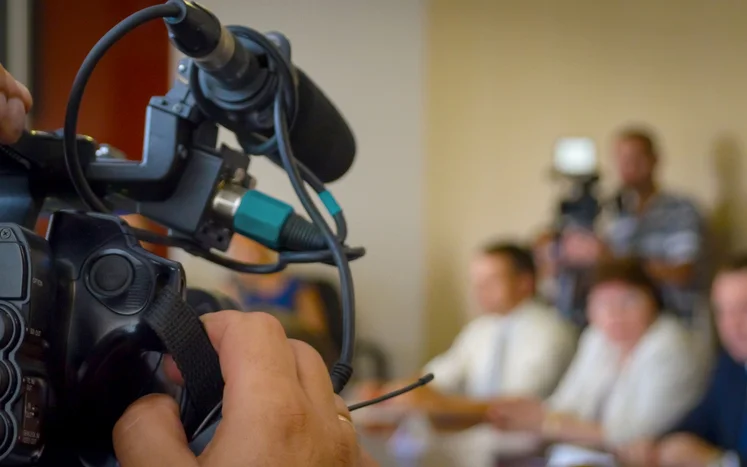Why Lawful Videography Is Necessary for Accurate Legal Record-Keeping
In the realm of legal process, the precision of record-keeping is vital, and legal videography arises as an important device in this context. By catching the subtleties of verbal and non-verbal interaction, it substantially lowers the potential for false impression that can go along with standard written records. The conservation of authentic aesthetic evidence not only improves the reliability of testimonies but also contributes to a detailed account of events. As we explore the multifaceted benefits of lawful videography, one need to consider its effects for the future of judicial integrity and transparency.
Value of Visual Proof
Developing the relevance of visual evidence in lawful procedures is extremely important for ensuring precise record-keeping and improving the general stability of the judicial procedure. Aesthetic evidence functions as an essential device in recording occasions, conditions, and other essential information that may be vital to a situation. Unlike composed accounts, which are prone to analysis and predisposition, visual recordings give a goal, unalterable depiction of truths as they occurred.
This type of proof can catch a variety of aspects, including witness behavior, ecological context, and physical proof, all of which may affect judicial end results. By providing a clear and extensive visual story, lawful videography gets rid of uncertainty and helps to maintain the authenticity of the evidence.
In addition, aesthetic evidence can be crucial in lowering conflicts over factual disparities, as it enables for a straight contrast against testimony and various other documented records. In an age where digital technology is significantly common, the ability to existing visual proof efficiently can considerably improve the total high quality of legal procedures. Ultimately, the consolidation of visual evidence not just reinforces the documents process yet likewise enhances public count on the judicial system by advertising transparency and liability.
Enhancing Testimony Trustworthiness
The assimilation of legal videography right into courtroom process considerably boosts the integrity of witness testament. By recording the subtleties of spoken and non-verbal communication, video clip recordings provide a more thorough representation of a witness's attitude, feelings, and reliability. This aesthetic paperwork permits jurors to observe the witness's body language, facial expressions, and general carriage, which are crucial components that can affect their assumption of testimony integrity.

Additionally, the visibility of video clip footage can prevent witnesses from offering misleading or overstated statements, as they know that their official statement testament is being videotaped. This responsibility reinforces the integrity of the judicial procedure. Eventually, legal videography offers as a crucial tool in guaranteeing that witness testimony is not just properly portrayed but additionally checked out with increased reliability by all parties included.
Comprehensive Document Conservation
Comprehensive document conservation is important for keeping the stability of legal procedures. Lawful videography acts as a vital tool in this procedure, providing a precise aesthetic and auditory account of testaments, depositions, and other crucial moments in an instance. Unlike conventional written records, video recordings record the nuances of body movement, tone, and emotion, which are crucial for recognizing the context and intent behind statements made throughout legal process.
Integrating audiovisual components right into record-keeping enhances the preservation of proof, guaranteeing that it stays undamaged and accessible throughout the legal process. This is specifically important in cases where the dependability of witness declarations might be tested, as visual recordings can validate insurance claims and give clarity. Furthermore, video clip documents can be important during charms or retrials, using an unchanged depiction of the initial testimony.

Furthermore, the ability to evaluate video evidence enables legal experts to determine vital information that may have been ignored in composed records. By preserving an extensive archive of legal proceedings through videography, law practice can copyright the highest possible criteria of precision and liability, inevitably adding to a fairer judicial process.
Streamlining Lawful Process
Enhancing legal proceedings is essential for boosting performance and minimizing delays within the judicial system. Legal videography serves as a critical tool in attaining this objective by supplying clear and accurate aesthetic documents of court hearings, useful link depositions, and statements - legal videography. This technology enables real-time recording, making certain that all spoken and non-verbal cues are captured, which can help with quicker resolution of disagreements
The assimilation of videography into lawful processes minimizes dependence on conventional methods, such as prolonged transcripts, which can be taxing to create and review. By having actually accessibility to tape-recorded video, attorneys can promptly reference essential minutes, improving their capacity to prepare and present instances successfully. This immediacy also assists in the clarifying of statements, minimizing the possibility for misconception.

Admissibility in Court
Accurate documents is important not just for effectiveness but additionally for making certain that evidence is admissible in court. Lawful videography offers as an important tool in this procedure, providing a dependable visual document of statements, declarations, and occasions.
To be considered acceptable, lawful videography should stick to well established procedures, such as correct devices use, appropriate illumination, and clear sound capture. Additionally, it is vital to have qualified videographers who recognize the lawful requirements surrounding proof collection. legal videography. The chain of safekeeping must also be preserved to protect against any insurance claims of meddling or change
Moreover, lawful videography can boost the persuasiveness of evidence by offering jurors with a direct view of the statement, permitting for an extra engaged understanding of the situation. In recap, the assimilation of lawful videography right into record-keeping not only supports efficiency however likewise boosts the honesty and admissibility of proof in go to this site court process.
Verdict
In conclusion, legal videography plays a critical function in making certain exact lawful record-keeping by giving unbiased aesthetic documentation. This method enhances the reputation of testaments, protects thorough documents, and simplifies lawful proceedings. Additionally, the admissibility of premium video evidence in court more underscores its relevance. Inevitably, the incorporation of legal videography into the judicial process advertises openness and reinforces public rely on the stability of the lawful system.